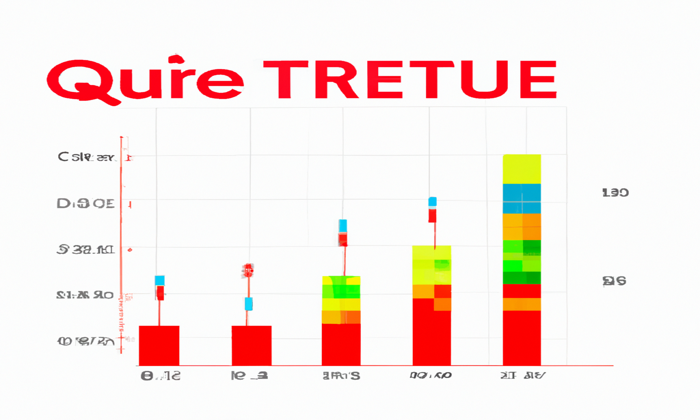The rise of digital assets has not only transformed the financial landscape but has also given birth to new threats, such as the crypto phishing scam. This alarming trend involves sophisticated tactics where fraudsters manipulate unsuspecting victims into relinquishing control of their cryptocurrency wallets, leading to significant financial losses. Recent investigations, particularly in Operation Avalanche, have unveiled a staggering $4.3 million siphoned from innocent users’ Ethereum accounts. As cryptocurrency fraud becomes more prevalent, vigilance around blockchain security is essential to protect individuals from digital asset theft. Understanding the intricacies of these scams is crucial for anyone invested in the burgeoning world of cryptocurrencies.
As the digital currency landscape evolves, so do the tactics employed by cyber criminals, particularly in the realm of online fraud targeting virtual assets. Utilized by offenders, these deceptive schemes, often referred to as “cryptocurrency scams,” leverage social engineering to connote a sense of security before exploiting victims. The complex web of threats not only affects users of Ethereum but resonates across various cryptocurrencies, intensifying the urgency for robust protective measures. Moreover, initiatives such as law enforcement collaborations like Operation Avalanche highlight the increasing sophistication of efforts to combat this digital crime wave. In this perilous environment, understanding the legitimacy of transactions and the security of blockchain technology has never been more vital for stakeholders in the cryptocurrency community.
Understanding Crypto Phishing Scams
Crypto phishing scams have become an increasingly prevalent threat in the digital space, especially with the rise of cryptocurrency popularity. These scams typically involve deceptive tactics to trick victims into providing access to their crypto wallets, resulting in significant financial losses. One common method is known as ‘approval phishing’, which allows scammers to gain direct access to victims’ Ethereum wallets by manipulating them into granting permissions without their full understanding of the implications.
Understanding the mechanics of these scams is critical for protecting oneself against becoming a victim. Scammers may employ various strategies, including false promises of high returns on investments or fraudulent endorsements from seemingly reputable figures in the cryptocurrency space. Awareness of these tactics can help individuals recognize warning signs and safeguard their digital assets from theft.
Frequently Asked Questions
What is a crypto phishing scam and how does it operate?
A crypto phishing scam is a fraudulent scheme where scammers trick individuals into giving up access to their cryptocurrency wallets, often through misleading websites or communications. They typically employ techniques like ‘approval phishing,’ allowing them to access your crypto assets once you authorize a transaction unknowingly.
How did Operation Avalanche disrupt the recent crypto phishing scam?
Operation Avalanche was a coordinated effort by U.S. and Canadian authorities that dismantled a $4.3 million cryptocurrency phishing scam by identifying and alerting victims of compromised Ethereum wallets. This operation showcased advancements in blockchain security and the utilization of forensic analysis to track down fraudsters.
What role do Ethereum scams play in crypto phishing attacks?
Ethereum scams are a common form of crypto phishing that target users by promoting fake investment opportunities or projects. Victims often end up giving scammers access to their wallets, leading to significant digital asset theft. Understanding these scams is crucial in protecting against them.
How can blockchain security help prevent crypto phishing scams?
Blockchain security can help prevent crypto phishing scams by utilizing advanced detection methods to identify fraudulent activities and protect wallets from unauthorized access. Law enforcement agencies, as seen in Operation Avalanche, use these techniques to uphold security and prevent digital asset theft.
What are some warning signs of cryptocurrency fraud, particularly in phishing scams?
Warning signs of cryptocurrency fraud include unsolicited messages promoting limited-time investments, requests for wallet permissions, and warning that your account may be at risk. Familiarity with these red flags can help avoid becoming a victim of crypto phishing scams.
How can I protect myself from crypto phishing scams?
To protect yourself from crypto phishing scams, always verify the source of messages related to your cryptocurrency accounts, never share your private keys, and use secure wallets. Educating yourself about common tactics, such as those used in Operation Avalanche, can further enhance your security.
What should I do if I believe I’ve fallen victim to a crypto phishing scam?
If you believe you’ve been scammed, immediately report the incident to your wallet provider, local authorities, and any relevant cryptocurrency platforms. Quick action can help mitigate losses and assist law enforcement, as evident from the efforts in Operation Avalanche.
What is ‘approval phishing’ in the context of crypto scams?
Approval phishing is a tactical approach used in crypto phishing scams where scammers manipulate victims into granting permission for fraudsters to access their wallets. Once the scam is approved, the fraudsters can directly withdraw assets, often without the victim’s knowledge.
How do law enforcement agencies collaborate to combat crypto phishing scams?
Law enforcement agencies collaborate by sharing resources, intelligence, and expertise to combat crypto phishing scams. Initiatives like Operation Avalanche demonstrate how U.S. and Canadian authorities can effectively pool their efforts against cryptocurrency fraud and reinforce blockchain security.
| Key Point | Details |
|---|---|
| Collaboration of Authorities | The U.S. Secret Service worked with Canadian agencies to combat the scam. |
| Operation Avalanche | The initiative to disrupt the $4.3 million scam targeting Ethereum wallets. |
| Phishing Method Used | Approval phishing allowed scammers access to victims’ wallets for fund withdrawal. |
| Pig Butchering Tactic | Social engineering technique to entice victims into bogus investments. |
| Blockchain Forensics | U.S. analysts aided in tracking and disrupting the scam effectively. |
| Increased Interagency Cooperation | Collaboration between different law enforcement agencies to fight crypto scams. |
Summary
The recent disruption of a $4.3 million crypto phishing scam highlights the pressing issue of digital fraud in the cryptocurrency world. This coordinated effort by U.S. and Canadian authorities under Operation Avalanche underscores the importance of vigilance among crypto users. With tactics like approval phishing becoming common, it is crucial for investors to remain informed and cautious to protect their assets against such scams. The collaboration between law enforcement and the use of blockchain forensics is a positive step towards addressing the growing challenges of crypto scams.
The rise of digital currency has unfortunately paved the way for a variety of cybercrimes, including the alarming trend of crypto phishing scams. Recently, U.S. and Canadian authorities successfully disrupted a sophisticated cryptocurrency fraud operation that defrauded individuals of approximately $4.3 million, primarily targeting their Ethereum wallets. Known as Operation Avalanche, this joint initiative highlighted the urgent need for improved blockchain security as they worked diligently to track compromised wallets and warn potential victims. An insidious technique known as “approval phishing” was at the heart of this scheme, where unsuspecting users inadvertently granted scammers access to their digital assets. Such rampant digital asset theft showcases the importance of vigilance in the crypto community and the necessity for continuous education on protective measures against fraud schemes.
Within the rapidly evolving landscape of virtual currencies, numerous illicit activities have emerged, most notably phishing schemes targeting cryptocurrency holders. One recent case, named Operation Avalanche, exemplified the danger posed by these fraudulent tactics which siphoned off millions from unsuspecting participants. Engaging various regulatory bodies and law enforcement, this operation aimed to crack down on digital asset theft and restore integrity to virtual transactions. By employing advanced analysis methods, officials worked together to ensure that victims of these scams, often lured into capitalizing on new blockchain investments, were alerted and protected. As the popularity of assets like Ethereum surges, so too does the necessity of robust strategies to defend against cryptocurrency fraud.















